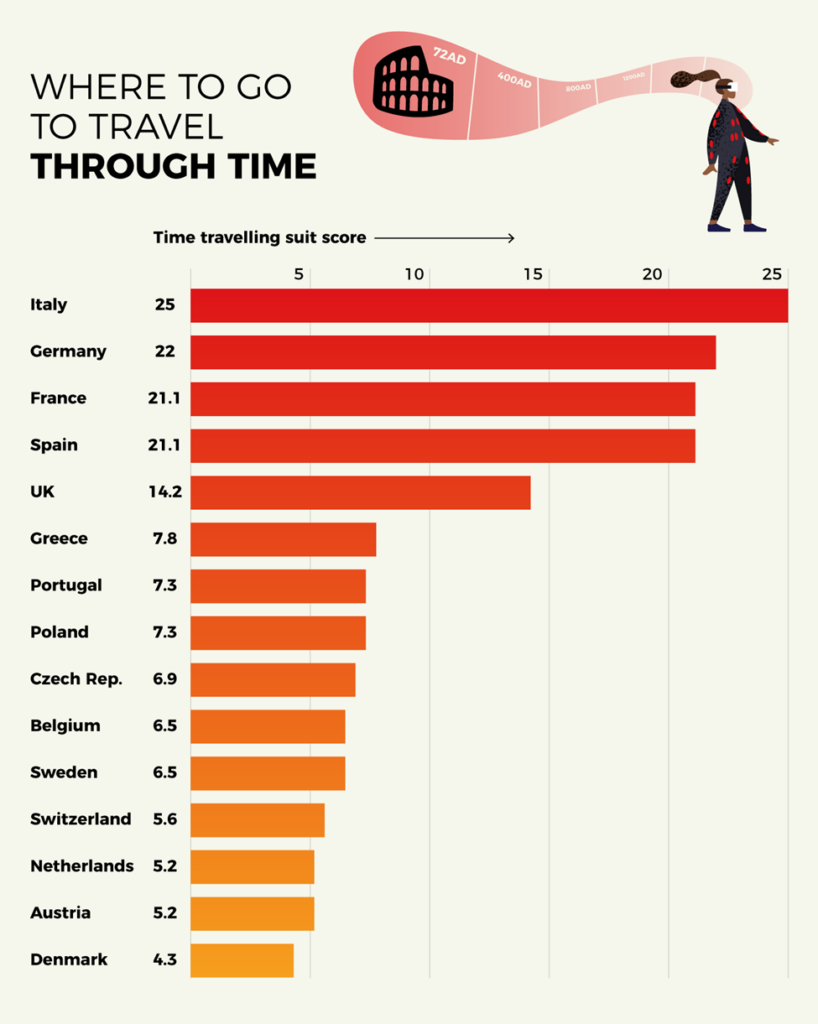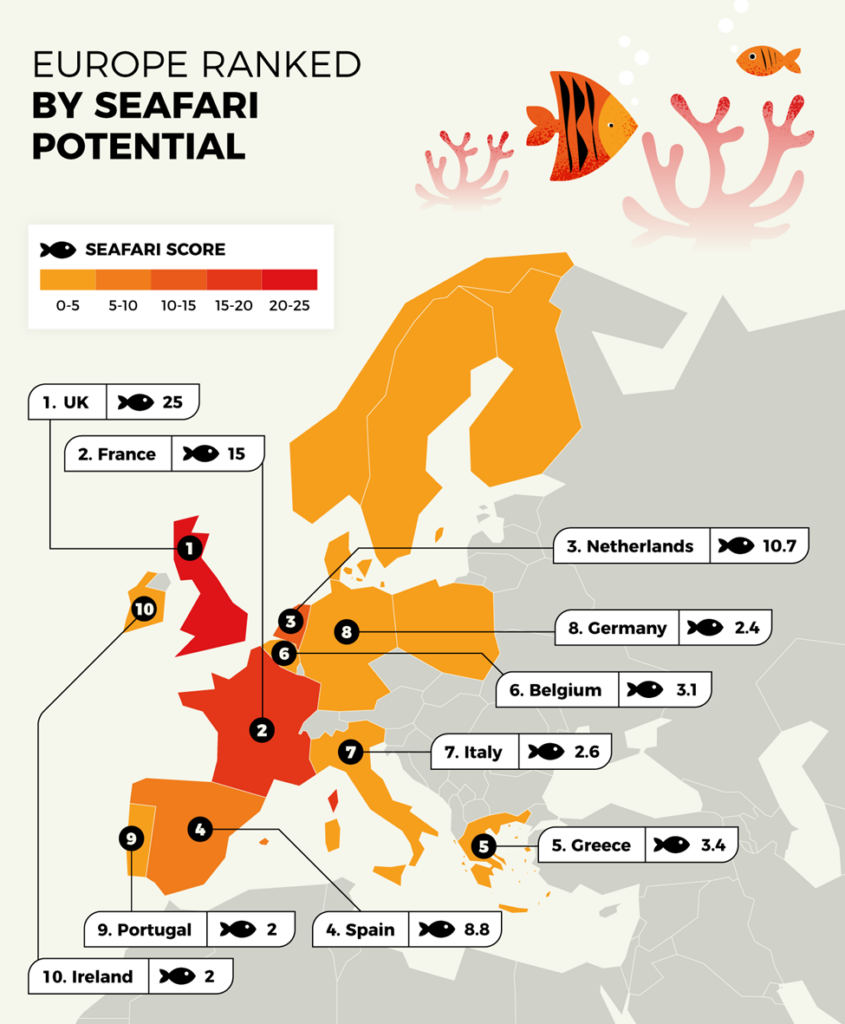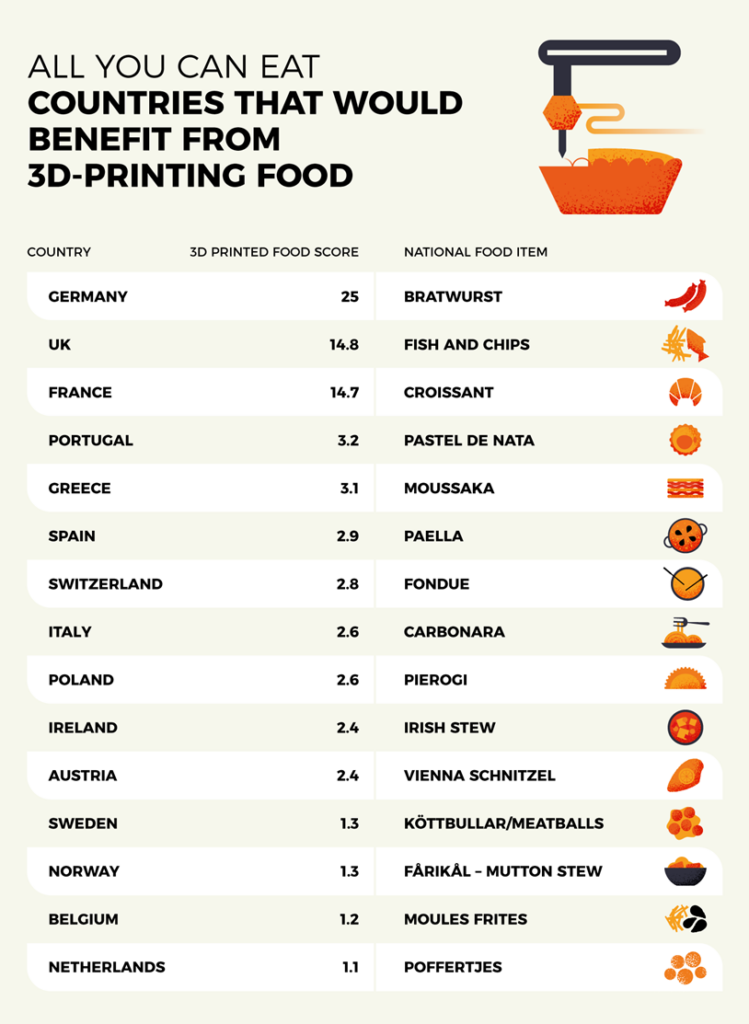Futuristic tech is at the forefront of many people’s minds, and while this has been most widely spoken about in terms of how it can affect our day-to-day lives and work, it also has the potential to dramatically change industries like travel. EasyJet recently launched their 2070: The Future Travel Report that called upon experts within the space to predict the technologies we could come to see within the next 50 years in the travel space, some of these mediate the pain points of travelling, and others serve to enhance the travel experience and provide new aspects of travel that we don’t currently experience.
For example, experts predicted that by 2070 we could see packages that offer time travelling holiday experiences via haptic suits and VR, which would enable holiday-goers to view historic landmarks and how people lived in times past. They then analysed which of these experiences people would be the most excited for, with over 2 in 5 (42%) expressing excitement for time travelling holiday packages and over 1 in 3 (38%) saying they would welcome biometric heartbeat passports that would allow them to breeze through security based on their unique heartbeat. Over 1 in 4 (32%) said they would appreciate underwater sea-fari experiences that allow them to view the ocean bed from a new perspective, and almost 1 in 5 (19%) said they would appreciate being able to 3D print their own hotel buffet food, the next stage in choice and personalisation.
Distrelec wanted to take these highly-anticipated tech-enabled activities and explore the parts of Europe in which these would have the most benefit, allocating scores according to data which exemplifies where this technology could bring the most change or offer the most significant experience enhancement.
Ranking according to four metrics, we analysed European getaway hotspots to see where travel tech could have the greatest impact.
Europe: Where Travel Tech Could Have The Greatest Impact

The UK came out on top as the country that would benefit the most from advancing travel technology, with the biometric passport metric and sea-fari metrics driving the overall score. The country scored highest for the greatest impact in implementing biometric heartbeat passports due to having the highest airport passenger traffic of all of the countries studied based on an analysis of London Heathrow. Surprisingly, they also scored highest for underwater sea-fari potential, given the number of dive sites within the country, with highlights such as Lundy Island, Devon, a marine conservation zone with vibrant marine life and 10 diveable wrecks, and Scapa Flow in Orkney, Scotland.
France placed in second position, with relatively proportionate scores across the metrics analysed, scoring above 20 for suitability for biometric heartbeat passports and time travelling haptic suit experiences, and around 15 for sea-fari potential and 3D printed buffet food. They scored second overall for sea-fari potential and third for 3D-printed buffet food. Utilising biometric heartbeat passports could drastically reduce queueing in Charles de Gaulle Airport in Paris, one of the most congested airports in Europe, and France as a whole had a total of 49 UNESCO World Heritage Sites, resulting in placing third for being able to offer the best time travelling experiences.
Placing in third position overall was Germany, which placed in fifth position for biometric heartbeat passport suitability based on analysis of passenger traffic at Frankfurt am Main Airport, second for offering time-travelling experiences, first for 3D-printed buffets, and 8th for sea-fari potential. Germany ranked so highly for 3D-printed buffets due to food wastage within the hospitality industry, which includes hotels. By 3D-printing food on demand, institutions can dramatically reduce the waste they create by allowing customers to print what they want or need and not more. Particularly in buffet situations, this allows the customer to consume what they wish without the need for overproduction.
Heart Skipped the Queue: Which Airports Would Benefit

Traditional biometric passports were first introduced in the UK around a decade ago, and contain an embedded microchip that holds all of your personal information and allows you to use the gates that scan your passport while simultaneously scanning your facial features. The potential of biometric heartbeat passports could mean that travellers would only need their heartbeat to access geographic movement.
London Heathrow, UK ranked in first position for offering the greatest impact here, as the high numbers of passengers coming through the airport to access European and international flights could ultimately be streamlined through the security process. In 2022, Heathrow served 61,599,196 passengers, an average of 168,764 passengers daily, a rate of 40,000 additional travellers daily than in 2021. The airport ranked third within Europe and 8th internationally for annual passenger traffic.
Charles de Gaulle, France placed in second position. With 54,474,033 passengers annually, or 149,243 passengers daily, biometric heartbeat passports could be instrumental in allowing passengers to beat the queue. As of 2022, the airport ranked in third position for being one of the busiest airports in Europe, beaten only by Istanbul, Turkey and London Heathrow. It also ranked within the top 10 of the busiest international airports.
Meanwhile, Amsterdam Airport Schiphol, Netherlands placed in third position, one of the only areas the country scored highly in except for sea-fari potential where they scored 3rd. The country saw 52,472,188 passengers pass through in 2022, an equivalent of 143,579 passengers daily, 25,185 passengers less daily than London Heathrow, the busiest in Europe.
Where to Go to Travel Through Time
Several European summer destinations have the potential to offer some of the best time-travelling experiences within the region, with the continent being a hotspot of history and world heritage sites.

Time travelling haptic suit experiences ranked in first position in terms of the technology that budding travellers were most excited for, and Italy, perhaps unsurprisingly, ranked highest for suitability due to the abundance of culture and history originating from the country. As the homeland of the Romans and often touted as one of the cornerstones of human civilisations, the country is home to historical landmarks and wonders such as the Colosseum, built between 70 and 72 AD. Areas like Rome would offer groundbreaking ‘time travelling’ experiences that allow visitors to experience the city how it was, rather than just seeing landmarks of previous civilisations. Shockingly, Greece doesn’t quite live up to Italy’s ranking, placing 6th, despite the fact that many may argue Greece’s historical superiority in terms of ancient times and influence.
Germany placed in second position, with 51 UNESCO world heritage sites. From ancient to modern times, the country has a lot to offer travelling history buffs, offering an unparalleled glance at former periods. The country features a range of historic sites, from the frontiers of the Roman Empire to various cathedrals and monasteries.
In third position is France. While it is often primarily considered in terms of its metropolitan capital, Paris, the country offers much more regarding regions and history. The capital has an exceptionally rich history and is home to five of 49 of the country’s UNESCO world heritage sites.
Europe Ranked by Sea-fari Potential

Many may assume that the sunny shores of the Mediterranean offer the best sub-aquatic opportunities for travellers wanting to see marine life, but according to our data, the UK actually comes out on top. Home to a variety of top dive sites and marine conservation areas, underwater seafaris could allow travellers to see a little-seen aspect of the country. With 1978 dive sites in total, spread across various UK regions and offering everything from vast marine life and clear visibility to reefs and aeroplane wrecks, there’s guaranteed to be something for any traveller.
Perhaps one of the less surprising results, France came in second position for potential sea-fari excursions. The country is home to 5,000 km of coastline, the Atlantic Ocean and Mediterranean Sea, and the first marine national park in Europe that have the opportunity to offer travellers new underwater adventures. Some of the highlights include the Calanques National Park, close to Marseille and offering up two historical shipwrecks within recreational diving depths, as well as caverns covered with Mediterranean red coral, and various spots throughout the French Riviera.
The Netherlands placed in third position, with a total of 850 dive sites throughout the country. Sources cite the Zeeland province as having numerous possibilities for diving, with one of the busiest and best-known being Oosterschelde. This area offers good visibility and sea life such as seahorses, starfish, crabs and oysters. There is also Grevelingenmeer between the provinces of Zeeland and Zuid-Holland, and Boschmolenplas in the Limburg province that is said to be one of the most beautiful freshwater spots in the country, with visibility of up to 12 metres.
All You Can Eat: Countries That Would Benefit From 3D-Printing Food

3D-printed food buffets may be a highly-anticipated choice from travellers due to the potential for personalisation and the ultimate range in choice, allowing customers to print what they desire rather than choosing from an endless buffet option, however it also addresses an issue within the industry that consumers perhaps don’t consider: food wastage. We analysed the suitability of different European countries for 3D-printed food options based on this issue, analysing the countries that have the highest rates of food wastage in the hospitality industry.
Germany came out on top in this regard, with an overall score of 25 attributed to the 1,860,980 tonnes wasted in the restaurants and food services sector in 2020. When we visualise this as one of the country’s national food items, the Bratwurst, this is the equivalent of 74,439,200,000 bratwursts (one bratwurst: 25g). This was rapidly higher than the UK which placed in second position, with 1,100,000 tonnes wasted in the same year, a difference of 760,980 tonnes.
Third position was taken by France, which closely followed the UK with a score of 0.05 less: 14.72, before the countries that followed dipped to scores of 3 and below. In 2020, the food and restaurant sector in France saw a wastage rate of 1,096,000 tonnes, a figure that could potentially be avoided through the implementation of 3D-printing food. This would allow customers to not only choose what they wish to eat, but also in what quantities, with significant numbers of food being wasted through leftovers from customer meals. This wastage figure is the equivalent of 12,894,117,647 croissants (one croissant: 85g).
Ultimately, technology has the potential to change how we physically travel, as well as how we experience travelling. From the moment we arrive at the airport security check in, to what we do and how we eat, by 2070 the nature of travel could look very different to how it currently looks thanks to technological innovation. Our data shows that these are the European hotspots that would benefit the most from these advancements, and offer the best experiences for savvy travellers looking to get more out of their holiday periods.
——————————————————————————————————————————-
Methodology
We drew upon data from a variety of sources to rank popular European countries for holiday-goers against the impact that could be made by future travel technology.
We used publicly available data to discover which countries’ main airports have the most annual passenger traffic to assess suitability for the biometric heartbeat passport innovation. We then used data from Statista to see which countries could offer the best time-travelling experiences based on the volume of UNESCO World Heritage Sites, and Dive Advisor to see which countries have the best underwater sea-fari potential based on current dive spots and underwater wildlife. We then analysed suitability for 3D-printed food buffets by addressing the pain point of the issue at hand, food wastage, which we calculated from the year 2020 in tonnes using data from Eurostat.
We allocated an equal weighting of 25 out of 100 to each of these metrics in order to generate a score, and then ranked these by highest to lowest within an index.











